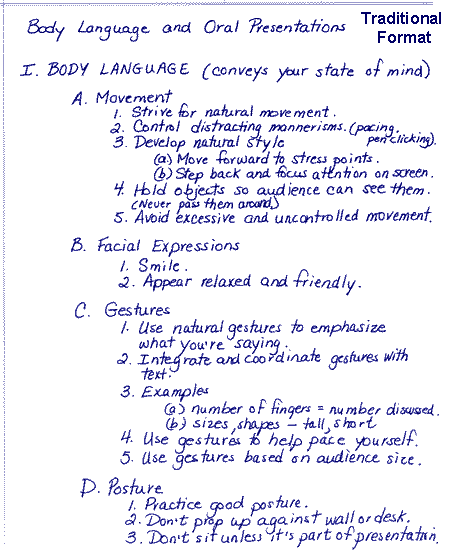Note-taking essentials
Taking notes is a key part of the learning and studying process. While you can develop your own note-taking style with experience, it can be helpful to understand some established note-taking methods and how they can work for you.
Why take notes?
Research shows that actively taking notes can make you more likely to remember information and perform better on exams. When you create notes by summarizing and making connections between ideas and concepts from lectures, discussions, and texts or readings, you synthesize the information into one cohesive study guide. Taking steps to create comprehensive notes will help with the organization of course materials and make exam preparation much easier, as you have your own materials to review when you return to them later in the semester.
When to take notes
Notes should not just be what you scribble down during class and never look at again. Taking effective notes is a three-part process with steps before, during and after class. Following these steps will help you develop the most cohesive notes that will help you learn throughout the semester and be exceptionally helpful in preparing for exams.
Before class
Going into a class with a general idea of what will be covered that day can help take some guesswork out of note-taking.
- Review any material your instructor has provided, like lecture slides or related readings, and attempt any assigned questions or problems.
- Previewing the material beforehand can help you follow the lecture - try allocating 20-30 minutes the night before to do an overview of the materials.
- Identify the main concepts so you can get an idea of what will be important.
- Make note of highlighted or bolded points and then concentrate on adding details during the lecture.
- Note any questions or points of confusion so you can get clarification during the lecture.
During class
Go to class prepared to take notes - make sure you have the necessary paper, pen, tablet or computer (charged!) ready before class begins.
Though some classes may use lecture capture, do not depend on recordings as a replacement for going to class. There are many benefits of attending lectures, including:
- A focused environment with fewer distractions allows for better absorption of the material
- Creating connections to form study groups or a network of classmates for questions and discussions
- Interacting with material during class can make challenging subjects more interesting and comprehensible
- Opportunities to ask questions immediately so you can get timely clarification
While there are different methods of taking notes, outlined below, there are some general ideas you should keep in mind for any note-taking style you choose:
- Use your own words and not transcribe the instructor word for word. Capturing the main ideas in your own words, and making connections between those ideas, if you can, will help you remember and learn concepts.
- Use abbreviations or symbols for common terms to help speed up your note-taking (just be sure to be consistent or make a glossary to ensure you don't forget what they mean!).
- Include quick notes to yourself by jotting down questions, details, things to research, and connections with previous classes or readings as they occur to you during the lecture. Your class may include lecture slides, discussions, videos, or other activities - try to make note of these so you know what source material your notes are stemming from, should you need to refer back.
- Answer any questions you had created in your pre-class preparations - keep those questions nearby and add the answers or cross them out as they are answered.
After class
Taking notes during class is only one step in creating notes that will best serve you - how you use those notes after the initial class is crucial.
- Review your notes as soon as possible after your class while your memory is still fresh. Add extra details that you remember from the class, add formatting such as highlighting or adding titles of different sections or concepts, and add any connections to other sources or questions you think of during your read-through.
- Try comparing notes with a classmate to see if you noted different points or captured the same central ideas.
- Do all optional homework and practice problems. In subjects like Math or Chemistry, mastery involves more than just reading and note-taking. To excel, you need to practice many types of problems, apply various formulas, and find methods that suit you best.
- While understanding the material is crucial, these courses emphasize practical application. Before diving into practice problems, thoroughly review notes and example problems provided by the instructor or textbook to establish a foundation. The more you practice, the greater your confidence in your knowledge (and for any exams!).
- Think of possible test questions from the material covered during each class and record these along with the answers.
Note-taking methods
While there is no one "right" way to take notes, outlined below are three popular and well-recognized methods that research has shown to be effective. You may want to try more than one of these methods to see what works best for you - one style may work for you right away, maybe you want to use a different method for each course, or try combining a couple to create the notes that best suit your learning preferences.
Developed at Cornell University, this method is an effective for both taking notes during a lecture or for creating notes from readings.
To use the Cornell method, divide your page into four distinct sections: Title, Questions, Notes, and Summary, as pictured below:
- the Title section sits at the top of the page and contains the factual information: course name, date, and chapter or lecture title.
- the Questions column is the left third of the page and is where you can make note of questions or points of confusion during class - this is the section you'll return to after class to fill in the answers
- the Notes section makes up the remaining 70% of the page and is the section where you will write your notes
- the Summary section sits at the bottom and is where you will write a summary of the lecture/reading in your own words (this section will be very helpful during review and exam preparation!)
Image source: Goodnotes.com
The outline method may resemble how you currently take notes or how you think notes should look. This method begins with a broad section of content (e.g. a chapter, module, or lecture) that contains organized subtopics labelled accordingly (e.g. topics 1, 2, 3 or a, b, c).
Using the outline method can help you create a comprehensive study guide, combining all information from various sources (e.g. lectures, textbooks, reading, labs) into one easy-to-review section.
With the outline method, you can prepare for class by creating the headings and sections for the lecture topic ahead of time and adding related notes from your textbook or other readings. Noting questions or topics you'd like to get clarification on can help here as well. When you're in class, you can fill in your outline and record the answers to any questions you identified earlier.

Image source: University of Tenessee
The mind-mapping method is a more visual approach to note-taking. In this method, you create visuals and images to represent the content of lectures while also making connections between each topic or section. This method may not be appropriate for all types of lectures or subject areas, but it has significant visual appeal. This method can be especially useful for review - when synthesizing information (consolidating information from various sources or across different modules), you can start with a mind map to visualize concepts and their connections, which can be particularly helpful with recall. An easy way to practice recall then is to try to reproduce your mind map, remembering the main points of particular topics and how they interrelate.
To create a mind map, put the main topic in the centre of your paper and then add information about that topic flowing out from the centre, connecting with arrows or other links. As mind maps may not look like traditional notes, they can be challenging to get the hang of, but with practice, they can be helpful for seeing the bigger picture of concepts and how they relate at a glance.

Image source: The Learning Center - University of North Carolina
Additional Resources
- Common note-taking methods [University of Tennessee Chattanooga]
- Note-taking 101 [Oregon State University Learning Corner]
- Note-taking [University of Auckland]